
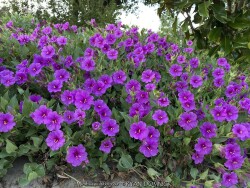
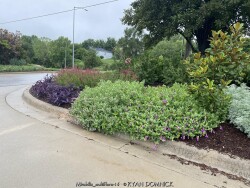
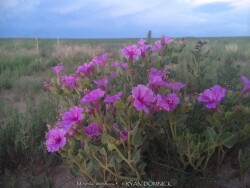
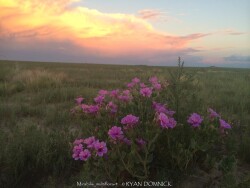
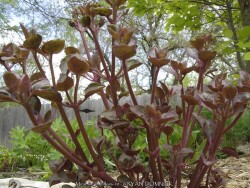
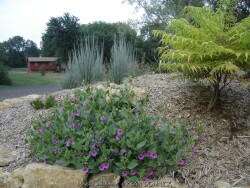
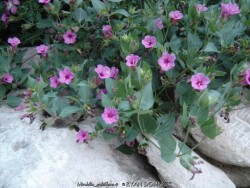
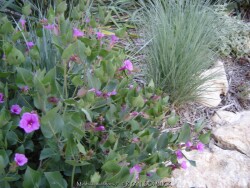

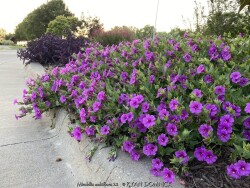

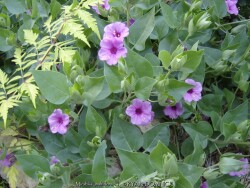
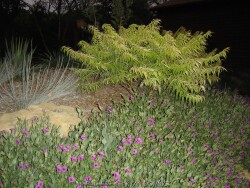
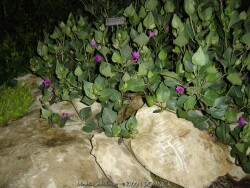
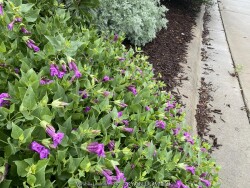
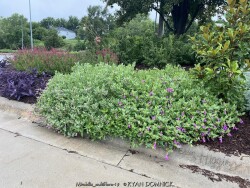
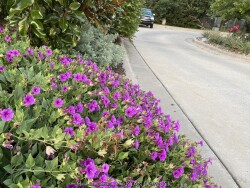
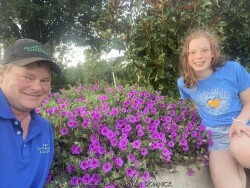

Plant Min Zone: 4b
Plant Max Zone: 9b
Sunlight: All Day Full Sun, Full Sun
Water / Rainfall: Very Low, Low
Soil Quality: Poor, Average
Bloom Season: Early Summer, Summer
Flower Color: Magenta, Pink
Berry / Fruit Color: None
Spring Foliage Color: Green
Summer Foliage Color: Green
Fall Foliage Color: Green
Evergreen Foliage: No
Winter Interest: No
Scented Flowers: No
Drought Tolerance: High
Wet-Feet Tolerance: Low
Humidity Tolerance: Low
Wind Tolerance: High
Poor Soil Tolerance: Rocky Soils, Sandy Soils, Shallow Soils
Height: 0.75' - 1.5'
Width: 2' - 3'
Growth Rate: Medium, Fast
Service Life: Medium: 3-5 years
Maintenance Need: Low
Spreading Potential: Medium
Yearly Trimming Tips: Trim Perennial to Ground Around First Fall Freeze: No Winter Interest.
Plant Grouping Size: Small Grouping of 3-5, Medium Grouping of 5-10
Best Side of House: South Exposure, West Exposure
Extreme Planting Locations: Survives Under Roof Overhang, Top of Retaining Wall Locations, Survives Severe Drought, Tolerates Extreme Heat, Resistant to Rabbits, Crevice Gardens
Ornamental Features: Multiple Seasons of Interest, Long Blooming Season
Special Landscape Uses: None
Possible Pest Problems: Weed Competition, Root Rot Disease, Foliage Disease
Plant Limitations: May get Occasional Winter-kill, Sometimes Mistaken as Weed, Needs Excellent Drainage, Late to Emerge or Leaf Out in Spring
Shippable in 2026: YES
Wild Perennial Four O'Clock (Mirabilis multiflora) is a beautiful mound-forming native wildflower found from Texas, New Mexico, Colorado, and West to California. Flowers, born over a long period, are bright pink with a magenta center. Foliage is an attractive mint green to grey-green with hints of pink on new growth. This tap-rooted herbaceous perennial can grow up to 2 feet tall and 6 feet across but completely dies back in the fall and does not root as it spreads. A mature plant can have hundreds of flowers blooming at the same time! Flowers last only 1 day but more will follow tthe next day. Self-seeding is rare in our Kansas display garden. Typical landscape uses in Kansas are as follows: annual plantings, parking lot islands, hot West and South exposures, south facing berms, and xeriscape gardens. It will thrive in most soils but not poor drainage. Having desert heritage, it resents poor drainage and winter moisture. To counteract that in Kansas, plant in full sun on berm or south-facing wall with poor sandy or rocky soil with no irrigation. It would be very useful as a vine-like perennial cascading over the top of a retaining wall! Amazing that a perennial native to areas receiving 4-10" of rain per year can grow in a climate receiving 4-10 times more rain!